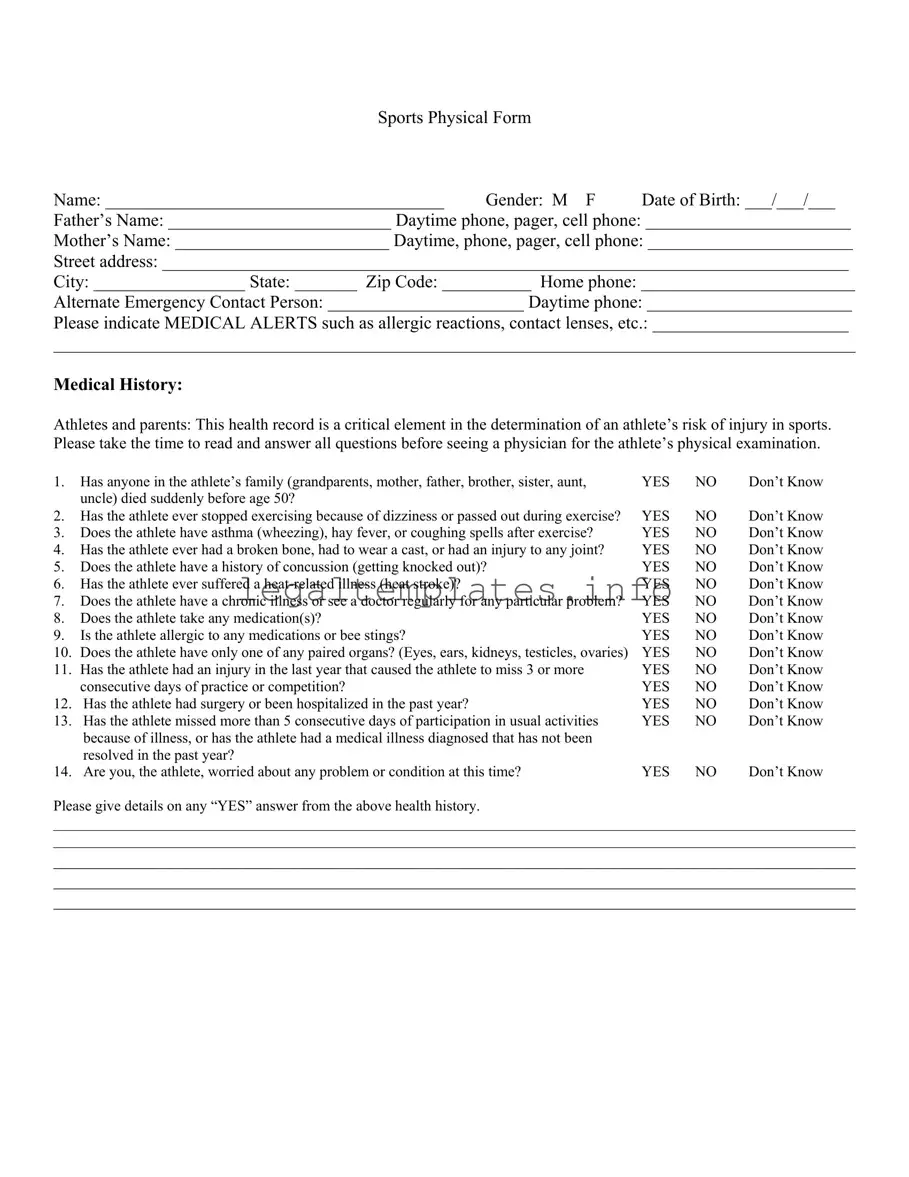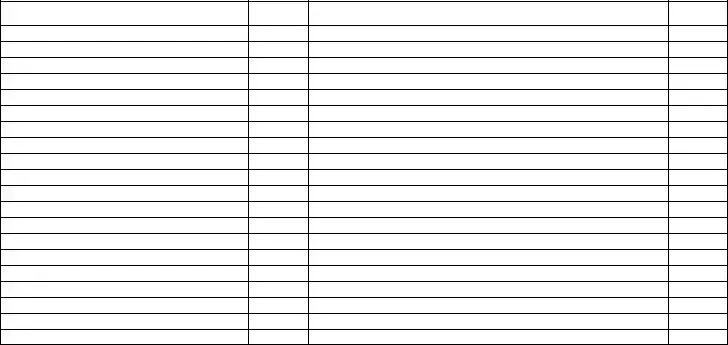What is a Sports Physical Form?
A Sports Physical Form is a document used to evaluate an athlete's health and fitness level before they participate in sports. It includes a medical history questionnaire and a physical examination section that must be completed by a physician. This form helps identify any conditions that might affect the athlete's ability to safely engage in sports activities.
Why is it necessary to complete a Sports Physical Form?
Completing a Sports Physical Form is crucial for preventing injuries and ensuring the safety of athletes during sports activities. It allows healthcare professionals to assess the athlete's physical condition, identify any risks, and recommend appropriate measures to minimize the chances of injuries. Many schools and sports leagues require these forms to be completed as part of their eligibility requirements.
How often should a Sports Physical be performed?
It is generally recommended that athletes have a Sports Physical once a year. This frequency ensures that any new health issues or changes in an athlete's condition are identified and addressed in a timely manner. Some organizations may have specific requirements regarding the timing of these physicals.
Can a family doctor complete the Sports Physical Form?
Yes, a family doctor can complete the Sports Physical Form as long as they are a licensed medical physician, physician’s assistant, or family nurse practitioner. It is important to note that a Doctor of Chiropractic Medicine is not considered satisfactory for the certification of the form according to most organizations' guidelines.
What happens if an athlete answers "YES" to any questions in the Medical History section?
If an athlete answers "YES" to any questions in the Medical History section, they should provide detailed information about their condition or experience. This enables the examining physician to understand the athlete's health better and make informed recommendations. Depending on the conditions disclosed, further evaluation or restrictions on participation may be necessary.
What does the physical exam include?
The physical exam portion of the Sports Physical Form assesses various aspects of the athlete's health, including height, weight, pulse, blood pressure, and vision. It also includes an evaluation of the eyes, ears, nose, throat, mouth, teeth, neck, cardiovascular system, chest, lungs, abdomen, skin, genitalia (for males), musculoskeletal system (including range of motion and strength), and neuromuscular function.
Who can certify the Sports Physical Form?
The form can be certified by a licensed medical physician, physician’s assistant, or family nurse practitioner after they have conducted the physical examination. The certifier attests that the athlete is medically qualified to participate in sports activities.
What should be done if restrictions are recommended?
If the physician recommends any participation restrictions, they should be clearly noted on the form. These restrictions might limit the types or intensity of activities the athlete can engage in safely. It's important for athletes, parents, and coaches to understand and adhere to these recommendations to ensure the athlete's well-being.

